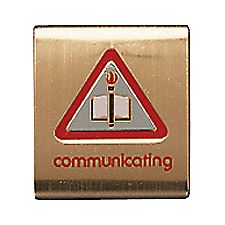Webelos Scouts that earn the Communicating Belt Loop while
a Webelos Scout
also satisfy requirement 15 for the
Communicator Activity Badge.
Requirements
Tiger Cubs, Cub Scouts, and Webelos Scouts may complete requirements in a family, den, pack, school, or community environment. Tiger Cubs must work with their parents or adult partners. Parents and partners do not earn loops or pins.
Belt Loop
Complete these three requirements:
- Tell a story or relate an incident to a group of people, such as your family, den, or members of your class.
- Write a letter to a friend or relative.
- Make a poster about something that interests you. Explain the poster to your den.
Academics Pin
Earn the Communicating belt loop, and complete five of the following requirements:
- Write an original poem or story.
- Keep a journal of daily activities for at least seven days.
- Listen to a news story on television or the radio. Discuss the information with an adult.
- Go to the library. Use the card catalog or computer reference system to find a book, and then check it out.
- Read a book that has been approved by your parent or teacher. Discuss the book with an adult.
- With a friend, develop a skit. Perform it at a Scout meeting, family meeting, or school event.
- Learn the alphabet in sign language. Learn how to sign 10 words.
- With an adult, use the Internet to search for information on a topic of interest to you.
- Watch three television commercials and discuss the information in them with your parent or den leader.
- Read the directions for a new game. Explain to a family member or friend how to play it.
- Learn about "reading" materials for people who have poor vision or who are blind.
- While traveling, make a list of road signs, animals, or license plates that you see.








